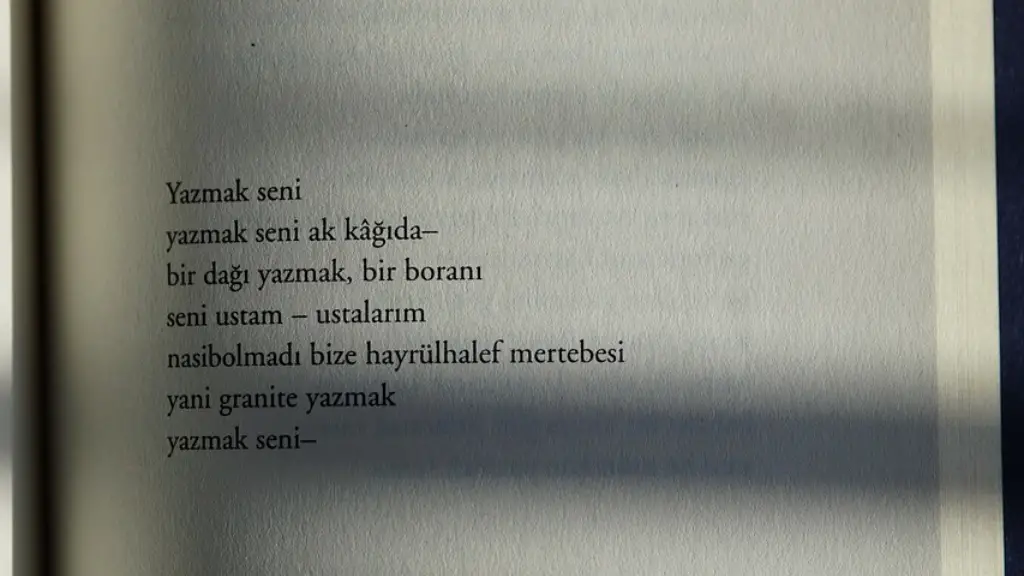Robert Frost’s poem “The Road Not Taken” is often thought of as a tribute to individualism and the courage to make unique decisions. Generally, the poem is interpreted as a metaphor for the choices one has to make in life and how, once made, the consequences of those choices can be irreversible. Frost’s poem is often viewed as a strategy for life, in which the speaker chooses the road not traveled, and is rewarded for taking a risk and making a unique choice. Frost’s poem is seen as representative of the possibilities that exist in our lives, regardless of how insignificant they may seem. The poem has also been used to speak to the idea that, no matter where life’s journey takes us, each of us has the potential to make an impact on the world.
Frost’s poem is written in four stanzas of five lines each, using the rhyme scheme abaab. The poem follows a narrative structure, with the speaker making his decision and then reflecting on the consequences of his choice. The poem begins with the speaker standing at a “fork in the road” and choosing between two paths. The speaker acknowledges that he will not know the consequences until he has gone down the chosen path. Frost uses the metaphor of two roads to illustrate the idea of having a choice and then making a decision. He emphasizes the idea that once a decision is made, there is no turning back. The speaker acknowledges that no matter what path he chooses, he will never know the consequences of choosing the other path.
Frost also suggests that the decisions we make have a lasting impact on our lives, even if we don’t know what that impact will be. The poem’s concluding stanza suggests the idea of living with regret if the wrong choice was made. Here the speaker reflects on the fact that the other road may have been more traveled and may have had a different outcome. The poem comes full circle by emphasizing the importance of decision-making and the role of chance in our lives.
The Road Not Taken is one of Frost’s most famous and oft-quoted poems. Its themes of individualism, risk-taking, and the consequences of choices are resonant and relevant to many readers, who often find solace in the idea that life’s journey is unpredictable and filled with possibilities, no matter how small they may seem.
Symbolism in The Road Not Taken
The poem is filled with symbolism that allows the reader to gain a greater understanding of what Frost is trying to convey. The roads in the poem represent the decisions we make in life and, along with the speaker, we all must contend with the consequences of our choices. The journey of life is metaphorical and the two paths we can choose from represent the potential outcomes of the choices we make. This idea of duality is key to understanding the meaning of the poem.
Frost also uses nature as a metaphor for life. The “yellow wood” is symbolic of the beauty of life and its unpredictable nature. The speaker is drawn to both roads, representing the duality of life, and is aware that taking one over the other will result in irreversible consequences. The speaker’s decision carries an element of risk, but also an air of excitement. Frost emphasizes this idea of taking a “less traveled” path, even if it means uncertainty, rather than the “safe” path of conformity.
The speaker, in the final stanza, reflects on the decision he made and acknowledges that he may not have made the right choice. There is an element of regret, as the other path may have been more traveled and perhaps a much better choice. Frost suggests that life is a journey filled with uncertainty and regret, and that making decisions is a part of life that we simply cannot avoid.
Themes in The Road Not Taken
The Road Not Taken is filled with numerous themes, some of which are explored more explicitly than others. The most obvious theme is the idea of decision-making and the consequences that follow. Making choices is a fundamental part of life and Frost’s poem emphasizes the importance of understanding the implications of our choices and taking responsibility for the decisions we make.
The poem also speaks to the idea of individuality and the courage to take risks. The speaker is aware that taking the less-traveled road will bring uncertain consequences, but decides to take the risk anyway. He is rewarded for his courage, as the journey’s unexpected surprises unfold before him. Through risk-taking, the speaker is able to gain experience, and ultimately, a greater understanding of life.
The poem also addresses the theme of regret, as the speaker looks back while acknowledging that he may have made the wrong choice. The other path, the one that may have been more traveled, may have had different consequences, which the speaker will never know. Frost employs several symbols, from the roads to the “yellow wood,” to illustrate the effects of chance and fate on our lives.
Analysis of The Road Not Taken
The Road Not Taken is arguably one of Robert Frost’s most famous poems. Its themes of risk-taking, regret, and the inextricable nature of our choices have resonated with readers for decades. Frost’s use of language and imagery allows the reader to gain a greater understanding of what Frost is trying to convey. The poem speaks to the idea that life is a journey of exploration and that our decisions have lasting consequences, even if we do not know what those consequences will be.
Frost begins the poem by Planting the reader at a “fork in the road.” He uses the metaphor of two roads to illustrate the idea of having a choice and then making a decision. He suggests that the decisions we make have lasting impacts on our lives, even if we don’t know what will happen next. The speaker faces the consequences of his choice and is rewarded for taking a risk and making an unconventional choice.
The poem speaks to the importance of individuality and of taking risks, even if it leads to uncertain outcomes. The speaker is aware that he will never know the consequences of choosing the other road, and that the other road may have been more traveled and had a different outcome. The poem encourages us to take charge of our lives, to make decisions even when we are unsure of the outcomes, and to rely on our own instinct and judgment.
Modern Interpretations of The Road Not Taken
Though The Road Not Taken was written over a hundred years ago, the poem continues to be relevant to modern readers. The poem’s universal themes have been used to discuss everything from individuality to choice-making. The poem has become emblematic of the idea of embracing risk and boldly taking the “less traveled” path, of trusting one’s own instincts and making choice that may not be understood by others. The poem has been used as a metaphor for everything from business decisions to life choices.
The poem’s message of individuality and of taking bold risks has been echoed by a variety of prominent public figures, from Oprah Winfrey to Barack Obama. It has served as a source of inspiration and motivation for many who seek to take risks in their lives. Through the lens of modern interpretation, the poem is seen as a statement on the possibilities that exist in life and of the rewards of embracing the unknown.
The Road Not Taken is one of Frost’s most popular poems. Its themes of decision-making and the consequences of our choices have resonated with readers for generations. Frost’s use of imagery and symbolism allow us to gain a greater understanding of what Frost is trying to convey. The poem speaks to the idea of individuality, of taking risks, and of facing the consequences of our actions. The poem is a reminder that it is our choice to make, and that the journey is all about embracing the unknown.
Literary Devices in The Road Not Taken
The Road Not Taken is filled with a variety of both poetic and literary devices. Frost employs several symbols to help the reader gain a greater understanding of what he is trying to convey. The roads are a central symbol in the poem, representing the decisions we make in life and the potential outcomes of those choices. Nature, in the form of the “yellow wood” is symbolic of the beauty of life and its unpredictable nature.
Frost also includes several literary techniques in the poem. The use of imagery helps the reader to gain a better understanding of the speaker’s experience. The poem exemplifies the idea of personification, with the roads taking on a person-like quality. There are also several examples of sound devices, such as alliteration and internal rhyme. Finally, the poem follows a narrative structure, with the speaker making a decision and then reflecting on the consequences of his choice.
The Road Not Taken is one of Robert Frost’s most famous and oft-quoted poems. Its themes of individualism, decision-making, and the consequences of choices have resonated with readers for decades. Frost’s use of poetic devices, such as imagery, symbols, and sound devices, allow the reader to gain a greater understanding of what Frost is trying to convey. The poem speaks to the idea of embracing uncertainty and of taking risks, even if it means facing potential regret. The symbolism and literary devices used in the poem help to illustrate the idea that life is a journey filled with both possibility and uncertainty, and that it is up to each of us to take charge and make the most of it.




